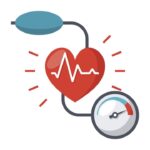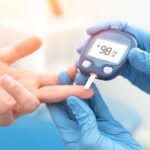Until now, through practical applications, computed tomography (CT) scanning has been proving and reaffirming its role in human healthcare. This technique enables physicians to diagnose internal body issues without invasive procedures. Let’s delve into this advanced imaging diagnostic method together with Thu Cuc TCI in the following article.
1. What is Computed Tomography (CT) Scan?
1.1. Definition
Computed Tomography (CT) scan is a specialized imaging diagnostic technique that utilizes X-rays. It provides detailed images of internal organs without invasive interventions. Particularly, this method offers better soft tissue imaging than conventional X-rays.
Currently, a CT scan is considered a common imaging diagnostic method applied in various medical facilities.
1.2. Roles of Computed Tomography (CT) Scan
CT scans can be employed to examine any part of the body. CT images can display soft tissues, blood vessels, nerves, and bones in different body parts such as the head, shoulders, spine, heart, abdomen, knees, chest, etc. Compared to X-rays, CT scans are more modern and comprehensive imaging diagnostic methods.
The most common application of CT scan is for brain scans to identify stroke causes or assess severe brain trauma. Additionally, other applications include:
– Detecting abnormalities in the body such as tumors, compression, abnormal blood vessels when patients exhibit symptoms or have suspicious test results.
– Providing detailed images for physicians before performing surgery.
– Determining tumor locations before radiotherapy.
– Locating biopsy sites.

You need to follow the technician’s instructions to get effective and accurate results.
2. CT Scanning Process
2.1. How does Computed Tomography (CT) Scan work?
During a CT scan, you will be asked to remove jewelry, metal accessories including glasses and dentures to ensure the most accurate scan results.
You will lie supine on the scanning table and slide into the machine until the body part to be scanned is entirely inside. The X-ray system will rotate around you. During this process, X-rays pass through your body. The information is collected by detectors and transmitted to the computer. Different densities of tissues will be displayed on the computer screen as varying shades of gray. At the end of this cycle, efficient and detailed thin-slice images of a body part are generated.
During the CT scanning process, you may hear mechanical sounds and experience minor discomfort.
2.2. Precautions before CT Scanning
Usually, minimal preparation is required before a CT scan, depending on the body part to be scanned. You will receive detailed instructions at the imaging diagnostics department before the procedure.
In general, you need to remove metallic items such as jewelry, hairpins, etc. It’s best to avoid wearing clothes with metal zippers or fasteners. Depending on the body part to be scanned, you may need to fast for a few hours. In case contrast media injection is necessary, you may need to temporarily stop using certain medications before the scan. For example, metformin – a medication for diabetic patients. Consult your doctor for detailed guidance.
Depending on the body part to be scanned, you may need to perform additional actions to enhance the contrast of different tissues. This improves contrast between organs and tissues in the body on the scan images.
– For abdominal and pelvic scans: You may need to drink special fluids to enhance visibility of the stomach and intestines.
– For pelvic scans: The doctor may inject a volume of fluid into your rectum through the anus.
– For female pelvic scans: You may be instructed to insert a tampon into the vagina.
– In some cases, you will be injected with contrast media through a vein in your arm. Contrast media may cause a warm, metallic taste in your mouth. However, this sensation only lasts for a short time.
CT scanning is a non-invasive technique and does not cause pain. You cannot see or feel X-rays. Additionally, you need to lie still during the scan to prevent blurring of images. The scanning time can vary from 5 to 30 minutes depending on the body part.
For pregnant women, unless absolutely necessary, CT scans should be avoided due to the small risk of fetal abnormalities caused by X-rays.

A CT (computed tomography) scan is a dignostic imaging method that helps healthcare providers detect diseases and injuries
2.3. Post-CT Scanning Precautions
Complications after CT scanning are very rare. A few cases may experience allergic reactions to contrast media and will be promptly treated. Contrast media may cause kidney damage but is extremely rare. Most abnormalities occur in patients with pre-existing kidney diseases.

Thu Cuc TCI is fully equipped with advanced diagnostic equipment, supporting the detection and treatment of a variety of diseases.
Immediately after the CT scan, you can return to normal activities. However, if sedatives were used during the scan, you need someone to accompany you home. Especially note not to drive until the sedatives wear off.
If you’re unsure where to get a CT scan, TCI – Thu Cuc Healthcare System is an option for you. TCI is equipped with multi-slice CT scanners to support accurate disease diagnosis. Moreover, highly skilled technicians will make your examination experience simple and easy. These are the details about CT scanning. If you have doubts or health concerns, don’t hesitate to schedule a check-up promptly for timely detection and treatment.








